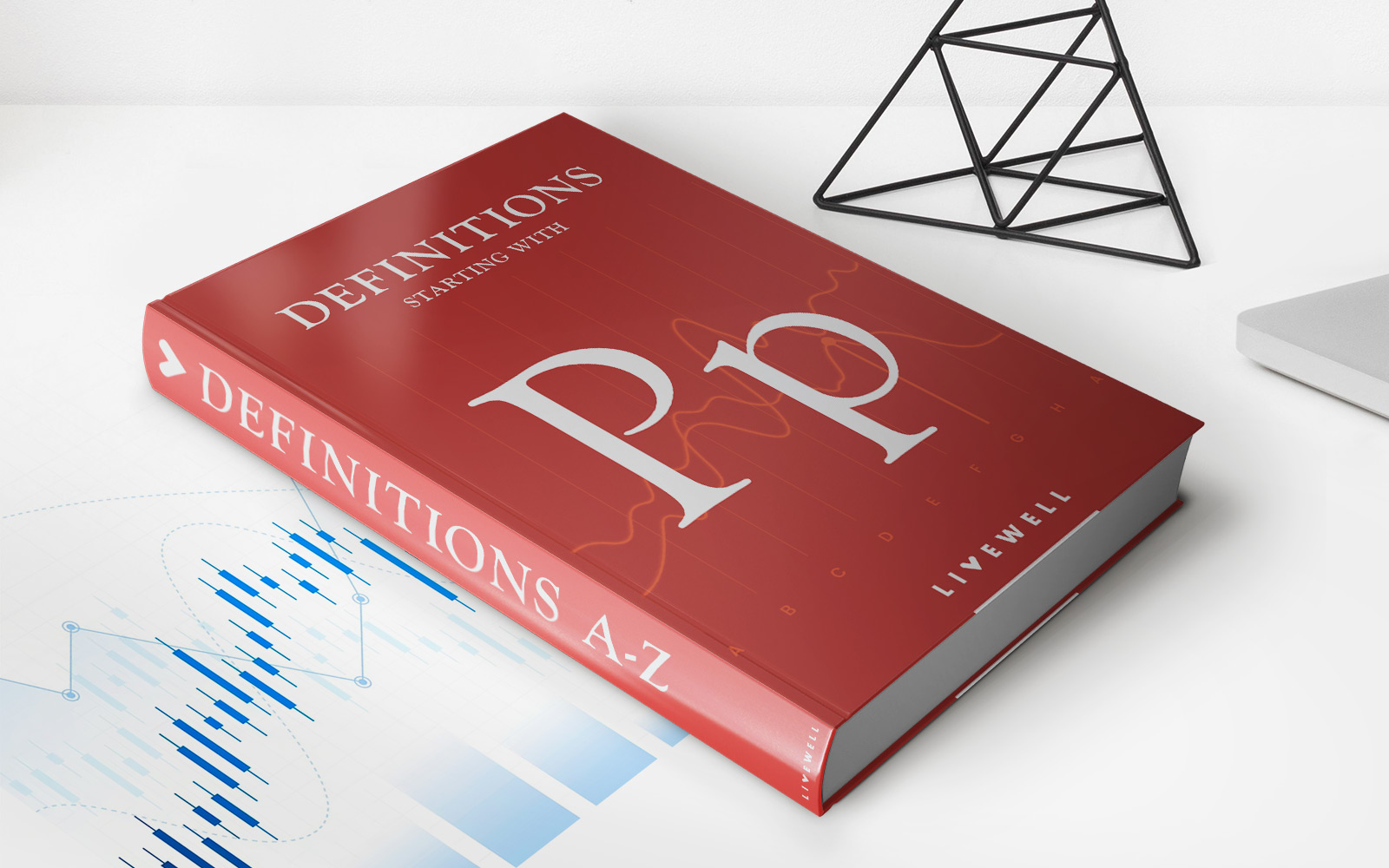

Finance
What Is Payment Reversal On Credit Card
Modified: February 21, 2024
Learn about payment reversal on credit cards in the world of finance and understand how it affects your financial transactions.
(Many of the links in this article redirect to a specific reviewed product. Your purchase of these products through affiliate links helps to generate commission for LiveWell, at no extra cost. Learn more)
Table of Contents
Introduction
Welcome to the world of credit cards, where convenience and purchasing power often go hand in hand. Whether you use your credit card for everyday expenses or for larger purchases, it’s important to understand the ins and outs of credit card transactions. One aspect that can sometimes cause confusion and frustration is payment reversals on credit cards.
A payment reversal occurs when a previously authorized transaction is reversed or canceled. This can happen for a variety of reasons, such as merchant errors, disputed charges, or fraudulent activity. While payment reversals may seem like a hassle, they serve an important purpose in protecting consumers and ensuring fair and accurate financial transactions.
In this article, we will explore the concept of payment reversals on credit cards in more detail. We will discuss the definition of payment reversals, the reasons behind them, the types of payment reversals, and the consequences they can have on both consumers and merchants. Additionally, we will provide tips on how to handle payment reversals and offer strategies to prevent them from happening in the first place.
Whether you’re a seasoned credit card user or just starting your financial journey, understanding payment reversals is crucial for maintaining control over your credit card transactions and protecting your financial well-being.
Definition of Payment Reversal
A payment reversal, also known as a chargeback or a refund, is a transaction that is reversed, canceled, or refunded by the merchant or the credit card issuer. Essentially, it involves undoing a previous payment that was authorized by the cardholder. When a payment is reversed, the funds that were originally transferred from the cardholder’s account are returned, resulting in a net zero effect on the cardholder’s balance.
Payment reversals can occur for various reasons, including:
- Disputed charges: If a cardholder notices an unfamiliar or incorrect charge on their credit card statement, they can dispute it with their credit card issuer. If the issuer determines that the charge is indeed invalid, they will initiate a payment reversal to refund the cardholder.
- Merchant errors: Sometimes, merchants may mistakenly charge the wrong amount, charge for a service or product that was not delivered, or charge the cardholder multiple times for a single transaction. In such cases, the merchant can voluntarily reverse the payment to correct the error.
- Fraudulent activity: When fraudulent transactions are detected, the credit card issuer or the cardholder may request a payment reversal to reclaim the funds and protect the cardholder from unauthorized charges.
It’s important to note that payment reversals are different from payment cancellations. While a payment reversal reverses a completed transaction and returns the funds to the cardholder, a payment cancellation simply cancels a pending transaction before it is completed, ensuring that no funds are transferred in the first place.
Payment reversals are a mechanism designed to protect consumers from fraudulent or unauthorized charges, resolve billing disputes, and ensure fair and accurate financial transactions. However, they can also have consequences for both consumers and merchants, which we will explore in the following sections.
Reasons for Payment Reversal on Credit Card
Payment reversals on credit cards can occur for a variety of reasons. Understanding these reasons can help you identify potential issues, resolve disputes, and take proactive measures to avoid payment reversals in the future. Here are some common reasons for payment reversals on credit cards:
- Disputed charges: One of the most common reasons for payment reversals is when a cardholder disputes a charge on their credit card statement. This can happen if they do not recognize a charge or believe that it was unauthorized or fraudulent. Cardholders have the right to dispute charges and request a payment reversal if they can provide evidence to support their claim.
- Merchandise not received or not as described: If a cardholder makes a purchase and does not receive the merchandise or receives an item that is significantly different from what was advertised, they may request a payment reversal. This is particularly relevant for online purchases, where the cardholder cannot physically inspect the product before buying.
- Double billing: Sometimes, merchants may accidentally charge a customer multiple times for the same transaction. This can be a genuine error or a result of technical glitches in the payment processing system. In such cases, the cardholder can request a payment reversal for the duplicate charges.
- Unauthorized use or fraud: If a credit card is lost or stolen, the cardholder may report it to their credit card issuer to prevent unauthorized transactions. Similarly, if fraudulent activity is detected on a cardholder’s account, the cardholder or the credit card issuer may initiate a payment reversal to reclaim the funds and safeguard the cardholder’s financial security.
- Subscription cancellations: In some cases, cardholders may cancel subscriptions or recurring payments but continue to be billed. If they can provide evidence of the cancellation request, they can request a payment reversal to stop the charges and refund any unauthorized amounts.
By understanding these common reasons for payment reversals on credit cards, you can be better prepared to handle them should they arise. It’s essential to review your credit card statements regularly, keep track of your purchases, and promptly report any discrepancies or issues to your credit card issuer to protect yourself from unwanted payment reversals.
Types of Payment Reversals
Payment reversals on credit cards can take different forms depending on the nature of the transaction and the specific circumstances surrounding the reversal. Here are some common types of payment reversals:
- Chargeback: A chargeback occurs when a cardholder disputes a charge on their credit card statement and requests a reversal. This can happen for various reasons, such as unauthorized transactions, fraudulent activity, merchandise not received, or billing errors. The credit card issuer investigates the dispute and, if successful, reverses the payment and credits the cardholder’s account.
- Refund: A refund is a voluntary payment reversal initiated by the merchant. This can occur when the cardholder returns a product, cancels a service, or disputes a charge and the merchant agrees to refund the amount. The refund reverses the original payment, returning the funds to the cardholder’s account.
- Intermediary chargeback: In some cases, a cardholder may dispute a charge with the merchant, but the merchant is unable or unwilling to resolve the issue. In such situations, the cardholder can escalate the dispute to their credit card issuer, who can initiate an intermediary chargeback. This involves the credit card issuer reversing the payment and crediting the cardholder’s account, pending further investigation and resolution.
- Pre-arbitration chargeback: If a dispute cannot be resolved through regular chargeback procedures, it may proceed to pre-arbitration. This occurs when the cardholder’s credit card issuer and the merchant’s bank exchange documentary evidence supporting their respective positions. A pre-arbitration chargeback reverses the payment temporarily while the evidence is being reviewed.
- Administrative chargeback: Administrative chargebacks typically occur when there is an issue with the processing or settlement of a transaction. This can include situations where the transaction is not completed, the funds cannot be captured, or there is an error in the transaction details. The administrative chargeback reverses the payment, allowing for the correction of the processing or settlement error.
Each type of payment reversal serves a specific purpose and is initiated based on different circumstances. It’s important to be aware of these types of reversals and understand how they may apply to your credit card transactions. By familiarizing yourself with the different types, you can better navigate the payment reversal process and seek resolution in case of any disputes or issues.
Consequences of Payment Reversals
While payment reversals serve as a mechanism to protect consumers and ensure fair financial transactions, they can have consequences for both cardholders and merchants. Here are some of the potential consequences of payment reversals:
- Financial impact on merchants: When a payment is reversed, the merchant loses the funds from the original transaction. This can impact their cash flow, especially for smaller businesses that rely heavily on timely payments. Additionally, merchants may incur chargeback fees or penalties imposed by their payment service providers or credit card processors.
- Damage to merchant reputation: Frequent payment reversals, especially due to fraudulent transactions, can damage a merchant’s reputation. This can make it more challenging to establish trust with customers and may result in a decline in business or difficulty obtaining merchant accounts in the future.
- Negative impact on cardholder credit: While payment reversals do not directly affect a cardholder’s credit score, frequent chargebacks or disputes can raise red flags for lenders and credit bureaus. This can lead to difficulties in obtaining credit or loans in the future.
- Potential strain on customer relationship: Payment reversals can cause frustration and inconvenience for cardholders, especially if they believe the reversal was unjustified. This can strain the relationship between the cardholder and the merchant, potentially leading to a loss of trust and future business.
- Additional time and effort: Resolving payment reversals can be a time-consuming process for both cardholders and merchants. Cardholders may need to gather evidence, communicate with their credit card issuer, and potentially go through multiple stages of dispute resolution. Merchants may need to provide documentation, navigate chargeback procedures, and dedicate resources to resolving the issue.
It’s important for both cardholders and merchants to be aware of these potential consequences and take necessary steps to minimize the occurrence of payment reversals. Cardholders should carefully review their statements, report any discrepancies promptly, and maintain open communication with their credit card issuer. Merchants should prioritize accurate billing, prompt customer service, and effective dispute resolution processes to mitigate the risk of payment reversals and maintain a positive relationship with their customers.
How to Handle Payment Reversals
Handling payment reversals effectively can help streamline the resolution process and minimize disruptions for both cardholders and merchants. Here are some steps to consider when faced with a payment reversal:
- Contact the credit card issuer: As a cardholder, the first step is to contact your credit card issuer to notify them of the payment reversal. Provide them with all relevant details, including the transaction information, the reason for the dispute, and any evidence you may have to support your claim. Be prepared to provide documentation, such as receipts or correspondence with the merchant.
- Follow the credit card issuer’s instructions: Your credit card issuer will guide you through the dispute resolution process. They may ask you to complete a dispute form, provide additional information, or submit any supporting documents. Follow their instructions promptly and thoroughly to ensure a smooth resolution.
- Document all communication: Keep a record of all communication with your credit card issuer, including dates, names of representatives, and details of the discussions. This documentation can be valuable in case of any further disputes or escalations.
- Cooperate with the investigation: Your credit card issuer will investigate the dispute and may reach out to the merchant to gather more information or evidence. Cooperate fully during this process, providing any requested information or clarifications promptly. This will help expedite the resolution.
- Be patient and stay informed: Resolving payment reversals can take time, so it’s important to be patient throughout the process. Stay informed about the progress of the investigation and any updates from your credit card issuer. By staying engaged, you can ensure that your dispute receives the attention it deserves.
For merchants, handling payment reversals involves similar steps:
- Communicate with the cardholder: If a cardholder disputes a charge and requests a payment reversal, promptly communicate with them to understand the issue and work towards a resolution. Be professional, polite, and open to finding a mutually agreeable solution.
- Gather supporting evidence: As a merchant, gather all relevant transaction data, such as receipts, invoices, shipping confirmations, or any other documentation that can support your case. This evidence can be crucial in successfully countering the payment reversal.
- Respond to the merchant processor or credit card issuer: Provide a timely response to any inquiries or requests from the merchant processor or credit card issuer. Be proactive in providing the necessary information and documentation to support your position.
- Consider mediation: In some cases, mediation services may be available to help resolve disputes between merchants and cardholders. Explore these options to reach a fair and equitable resolution without going through the chargeback process.
- Learn from the experience: Payment reversals can provide valuable feedback and insights into areas where your business processes or customer service may need improvement. Analyze the root causes of the reversals and take steps to prevent similar issues in the future.
By following these steps, both cardholders and merchants can navigate the payment reversal process more effectively and increase the chances of a satisfactory resolution. Clear communication, thorough documentation, and cooperation are key in handling payment reversals efficiently.
Preventing Payment Reversals on Credit Cards
While payment reversals can be a hassle for both cardholders and merchants, there are steps you can take to reduce the likelihood of experiencing them. By implementing preventive measures, you can protect yourself from unauthorized charges, billing disputes, and potential financial disruptions. Here are some tips for preventing payment reversals on credit cards:
- Provide accurate transaction descriptions: When processing transactions, ensure that the description accurately reflects the goods or services being provided. This helps cardholders recognize the charge on their credit card statements and reduces the likelihood of disputes.
- Deliver excellent customer service: Providing exceptional customer service and promptly addressing any concerns or issues can reduce the likelihood of cardholders resorting to payment reversals. Clear communication, transparent policies, and swift resolution of disputes can go a long way in maintaining positive customer relationships.
- Secure your customer data: Protecting your customers’ payment information is crucial in preventing fraudulent transactions. Implement robust security measures, such as encryption, tokenization, and PCI compliance, to safeguard sensitive cardholder data and prevent unauthorized access.
- Implement a clear refund policy: Having a well-defined refund policy can help set expectations with customers and minimize disputes. Clearly communicate your refund policy on your website, receipts, and invoices to avoid any confusion or misunderstandings that could lead to payment reversals.
- Verify customer identity: Take steps to verify the identity of your customers, particularly for high-value or suspicious transactions. Use address verification system (AVS), CVV verification, or other fraud detection tools to reduce the risk of fraudulent activity.
- Provide detailed documentation: Maintain thorough documentation of each transaction, including invoices, receipts, delivery confirmations, and customer communications. This documentation can be crucial in resolving disputes and defending against payment reversals.
- Regularly reconcile transactions: Reconciling your transactions regularly can help identify any discrepancies or errors promptly. This allows you to proactively address issues before they escalate into payment disputes or reversals.
- Stay up to date with industry regulations: Stay informed about the latest industry regulations and compliance requirements. Understanding and adhering to these guidelines can help you maintain the integrity of your transactions and reduce the likelihood of payment reversals.
By implementing these preventive measures, you can significantly reduce the risk of payment reversals on your credit cards. Taking proactive steps to protect both your customers and your business will not only help you avoid disputes and financial disruptions but also contribute to a positive reputation and customer satisfaction.
Conclusion
Payment reversals on credit cards can be a source of confusion and frustration for both cardholders and merchants. However, understanding the concept of payment reversals, the reasons behind them, and the steps to handle and prevent them can empower you to navigate credit card transactions with confidence.
Payment reversals serve an essential purpose in protecting consumers from fraudulent charges, resolving billing disputes, and ensuring fair and accurate financial transactions. By being aware of the common reasons for payment reversals, such as disputed charges, merchant errors, and fraudulent activity, you can be better prepared to address any issues that may arise.
Knowing the types of payment reversals, including chargebacks, refunds, and administrative reversals, enables cardholders and merchants to navigate the resolution process more effectively. Clear communication, timely documentation, and cooperation with the credit card issuer or merchant processor can streamline the dispute resolution process, leading to a more favorable outcome.
Prevention is key when it comes to payment reversals. Implementing preventive measures, such as accurate transaction descriptions, excellent customer service, secure customer data protection, and clear refund policies, can minimize the likelihood of payment disputes and reversals. Regularly reconciling transactions and staying up to date with industry regulations are also crucial in maintaining the integrity of your credit card transactions.
In conclusion, understanding payment reversals, handling them effectively, and taking preventive measures can help you navigate the world of credit card transactions with confidence and minimize disruptions to your financial well-being. By staying informed, proactive, and cooperative, you can maintain a positive relationship with your credit card issuer, protect yourself from unauthorized charges, and ensure smooth and secure financial transactions.














